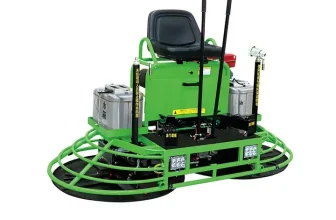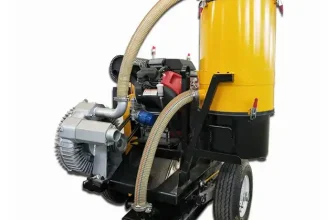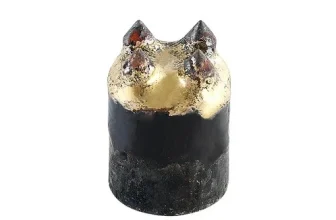Introduction to Dry Pour Concrete
What is Dry Pour Concrete?
Dry pour concrete, also known as dry-mix concrete, is a unique type of concrete that is mixed and applied without adding excess water. Unlike traditional concrete, which is mixed with a substantial amount of water to achieve a fluid, pourable consistency, dry pour concrete is prepared with just enough moisture to initiate the chemical reaction necessary for curing. This method allows the concrete to be laid in place and solidified with minimal water content.
The dry pour concrete mix typically consists of cement, sand, and aggregate materials like gravel or crushed stone, similar to conventional concrete. However, its key distinction lies in the reduced water usage, making the mixture more granular and less fluid. This quality can simplify on-site mixing and application, especially in situations where water access is limited or where precise control over the mixture’s moisture content is critical.
Moreover, dry pour concrete can be either bagged or mixed on-site. Pre-packaged dry pour concrete mixes can be conveniently purchased and transported to the job site, requiring only the addition of a small amount of water. On-site mixing, on the other hand, allows for greater flexibility and control over the mix proportions and moisture content, ensuring suitability to specific project needs.
This type of concrete is highly valued in construction and repair work where quick setting and reduced water usage are advantageous. It is particularly useful in remote locations or in conditions where water conservation is a priority. Its ease of application and fast setting time also make it a preferred choice for smaller or time-sensitive projects.
Key Characteristics of Dry Pour Concrete
Dry pour concrete, also known as dry-packed concrete or dry mix concrete, is a versatile and often indispensable material in the construction industry. One of the key characteristics of dry pour concrete is its unique composition. Unlike traditional concrete, which is mixed with water before application, dry pour concrete is a pre-mixed blend of cement, aggregates, and other additives. Water is added only at the point of placement, allowing for greater control over the consistency and workability of the mix.
Another significant attribute of dry pour concrete is its ease of use. The mix can be directly poured into molds, forms, or gaps, and it is designed to set and harden with minimal compaction. This feature makes it particularly suitable for repair work, where filling narrow or hard-to-reach areas is essential. The self-leveling nature of some dry pour concrete mixes also contributes to its efficiency, reducing the need for manual leveling or extensive finishing.
Durability is another prominent characteristic. Dry pour concrete typically exhibits high compressive strength and excellent resistance to weathering, making it ideal for both indoor and outdoor applications. Its robust nature ensures longevity in various environmental conditions, including freeze-thaw cycles, which can be detrimental to other materials.
The adaptability of dry pour concrete is further highlighted by the fact that it can be modified with various additives to meet specific project requirements. For instance, accelerators can be added to speed up the curing process, while retarders can extend the working time of the mix. This flexibility allows for customization depending on the specific needs of a project, be it rapid repair or large-scale construction.
Finally, the environmental impact of dry pour concrete is relatively low compared to other construction materials. Since it can be mixed on-site, transportation costs and emissions are reduced. Additionally, the precise control over the mix reduces waste, contributing to more sustainable construction practices.
In summary, dry pour concrete’s key characteristics—its unique composition, ease of use, durability, adaptability, and low environmental impact—make it a valuable material in a wide array of construction and repair applications.
Applications and Benefits of Dry Pour Concrete
Common Uses of Dry Pour Concrete
Dry pour concrete, known for its unique application process, has found favor in a variety of construction scenarios due to its convenience and efficiency. One of its most common uses is in the creation of fence post foundations. By using dry pour concrete, installers can avoid the hassle of mixing and transporting wet concrete. Instead, they pour the dry concrete mix directly into the hole around the fence post and then add water. This method simplifies the process and significantly reduces labor time.
Another prevalent application is in small, non-structural projects like garden pathways and decorative stepping stones. Homeowners and DIY enthusiasts often prefer dry pour concrete for these jobs because it allows for a streamlined application, minimizing the mess generally associated with concrete projects. The dry mix is simply laid out and then wetted, allowing for a quick and straightforward installation.
In addition, dry pour concrete is frequently used for minor repairs around the household, such as fixing small cracks in driveways or filling gaps in concrete slabs. Its ready-to-use nature makes it ideal for quick fixes, providing a solid solution without the need for extensive mixing equipment or experience.
Retaining walls also benefit from dry pour concrete, especially in landscaping and garden environments. The dry mix can be packed into forms and then moistened, providing a stable, enduring structure that requires less immediate handling and manipulation compared to traditional methods.
Exploring further, dry pour concrete is useful for setting small, lightweight structures like mailboxes and birdbaths. These applications don’t demand the compressive strength needed for more substantial projects, making the simplicity of dry pour concrete a practical choice.
Finally, this type of concrete is handy for quick setting applications in remote or challenging environments where access to mixing equipment and water might be limited. Dry pour concrete offers flexibility and adaptability, ensuring that even in less-than-ideal conditions, strong and dependable structures can be erected.
Overall, the versatility, ease of use, and efficiency of dry pour concrete make it invaluable for various small-scale applications, facilitating projects that require reliable yet straightforward concrete solutions.
Advantages of Using Dry Pour Concrete
Dry pour concrete offers several compelling advantages that make it a popular choice for various construction projects. One of the primary benefits is its ease of use. Unlike traditional wet concrete, dry pour concrete comes as a pre-mixed, dry powder that only requires the addition of water on-site. This characteristic simplifies the mixing process, reduces labor costs, and minimizes the risk of errors during preparation.
Another significant advantage is its quick setting time. Dry pour concrete typically sets faster than its wet counterpart, allowing for quicker project completion and reducing downtime. This feature is particularly beneficial in time-sensitive projects where rapid curing is essential.
Durability is another strong point of dry pour concrete. It is highly resistant to environmental stressors such as freeze-thaw cycles, water infiltration, and chemical exposure. This makes it suitable for both indoor and outdoor applications, where long-term performance and minimal maintenance are crucial.
Cost-effectiveness is also a key advantage. Since dry pour concrete reduces the need for extensive mixing equipment and labor, it can lead to significant cost savings. Additionally, with lower waste generated due to precise mixing ratios, material costs can be better controlled.
Finally, dry pour concrete offers flexibility in application. It can be used in a variety of projects, ranging from small-scale DIY endeavors to large commercial constructions. Its versatility extends to different forms and finishes, giving architects and builders the freedom to achieve specific aesthetic and functional outcomes.
In summary, dry pour concrete stands out for its ease of use, quick setting time, durability, cost-effectiveness, and versatility, making it an excellent choice for a wide range of construction needs.







